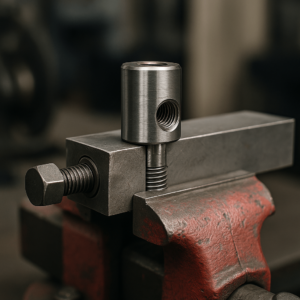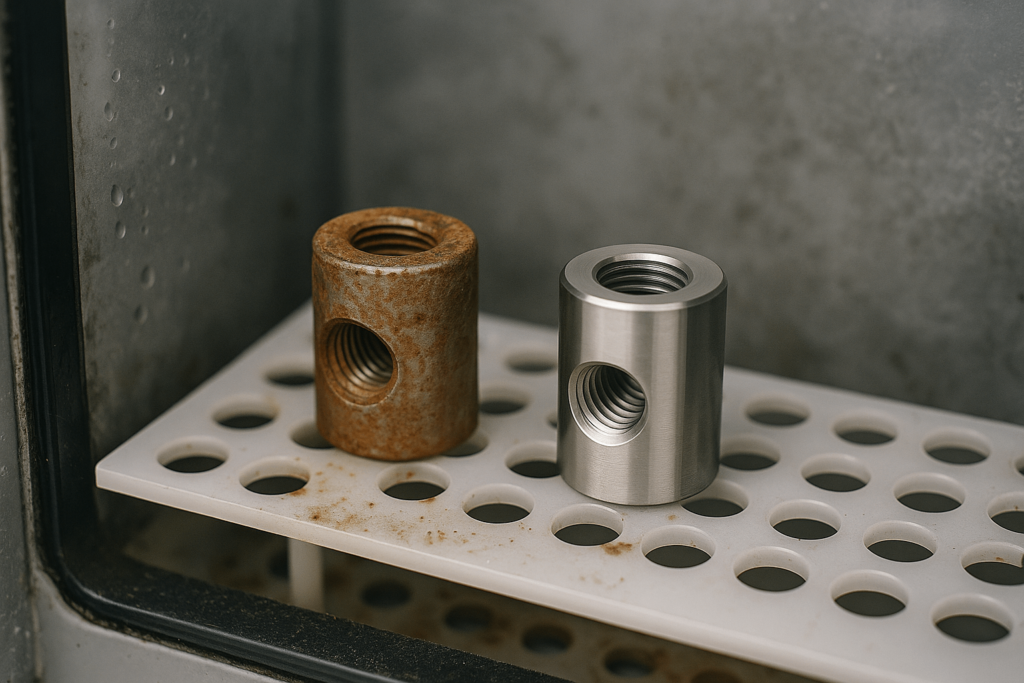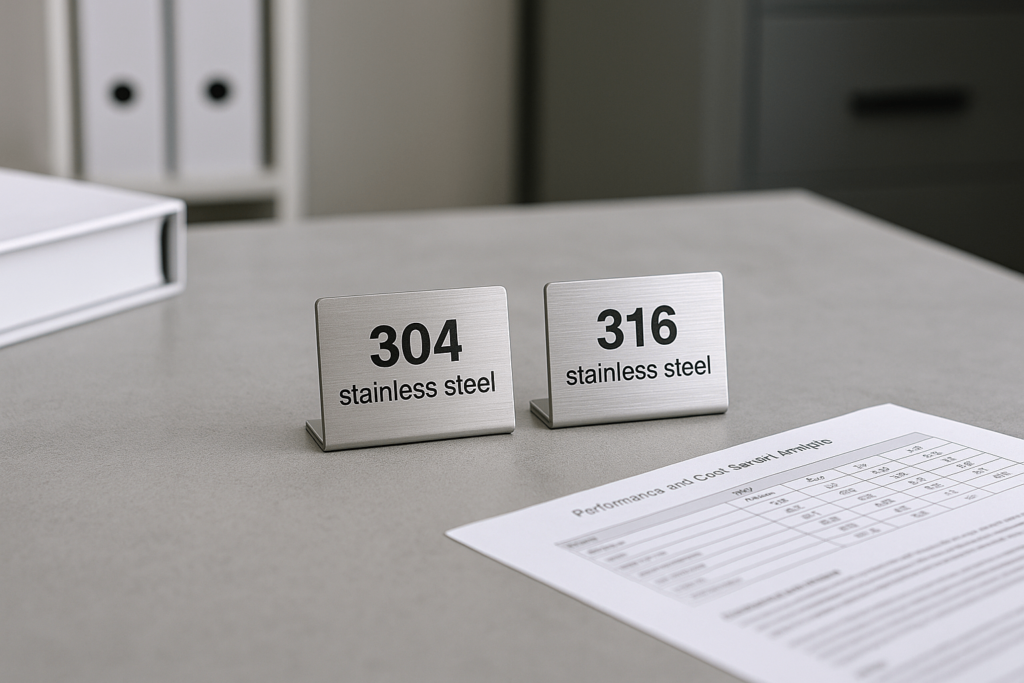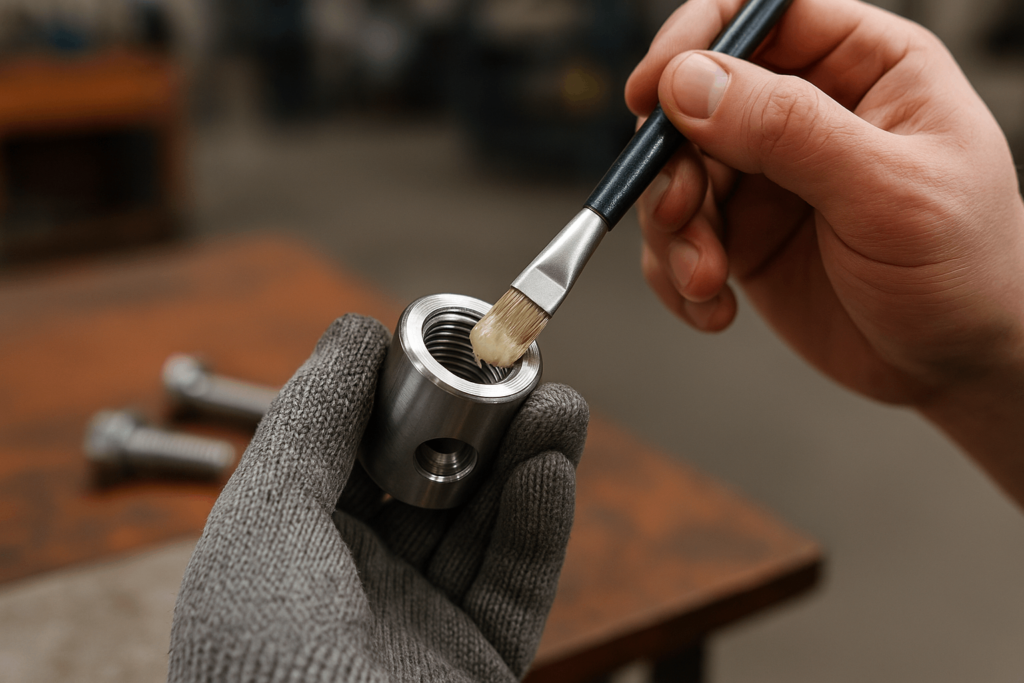Introduction: From a Single Component, the Difference Between a Reliable Supply Chain and a Costly Failure
In global manufacturing, success is measured by reliability. A product’s reputation can be built over years and destroyed in an instant by a single, overlooked component failure. Why do some product lines suffer from costly warranty claims due to corrosion in certain climates, while others perform flawlessly for decades?
The answer lies in a commitment to engineering excellence, right down to the smallest detail—a commitment embodied by the stainless steel barrel nut.
This document is not a simple product catalog; it is a strategic guide for procurement professionals, engineers, and supply chain managers. We will move beyond basic specifications to conduct a deep analysis from the perspectives of material science, mechanical engineering, and, most importantly, supply chain risk management.
This is a masterclass in how a deep understanding of a single component can de-risk your entire production process.
Chapter 1: Deconstructing the Connection—Why the Barrel Nut is the “Optimal Solution” for High-Integrity Joints
For wholesale buyers, the choice of a fastener is a direct input into the quality and marketability of the final product. The barrel nut’s design offers distinct advantages that translate into higher perceived value, reduced assembly complexity, and superior long-term performance—all critical factors in a competitive global market.
➡️ Looking for high-load, low-profile joints? Explore our guide to custom fastener design for structural stability.
The Core Principle: Remodeling Force for Unmatched Structural Integrity
At its heart, the barrel nut—also known as a cross dowel barrel nut—is a cylindrical fastener with an internally threaded hole running perpendicular to its length. Its function is to create an exceptionally strong, right-angle connection. Unlike traditional automotive nuts and bolts, which simply clamp external surfaces, the barrel nut is embedded within one of the workpieces.
This internal placement fundamentally remodels the forces within the joint. A mating bolt threads into the barrel nut from the side, converting the joint’s mechanics from surface compression to internal tension. This configuration brilliantly addresses the inherent weakness of fastening into the end grain of wood or the core of composite materials, where traditional screws offer poor holding power.
The clamping force is distributed along the entire length of the barrel nut, creating a connection with vastly superior structural integrity and long-term stability. For a procurement manager, this means a more robust final product, reducing the risk of field failures and minimizing warranty claims.

The Design Advantage: A Driver of Premium Value and Production Efficiency
The mechanics of the barrel nut deliver two powerful business advantages. For product designers, its ability to create a completely concealed joint is a key enabler of premium aesthetics. With no visible hardware, it facilitates the clean lines and flawless finish essential to minimalist design, a feature that commands higher prices in markets from high-end furniture to architectural fixtures.
For production managers, the benefit is structural and logistical. The superior load distribution enables a joint that is not only strong but also highly resistant to loosening under vibration—a critical factor for globally shipped products. Additionally, its use in ready-to-assemble (RTA) furniture makes assembly virtually foolproof for the end consumer, significantly reducing after-sales service costs.
The Specification System: Ensuring Component Compatibility and Performance
Specifying the correct barrel nut types is crucial for ensuring seamless integration into a production line. Incompatibility leads to delays and increased assembly costs.
- Head Styles: The choice between Countersunk (CSK) heads, which sit flush with the surface, and non-countersunk heads like Pan or Truss, is a key manufacturing decision. A flush finish may be critical for aesthetics, while a Truss head’s wider bearing surface can prevent damage to softer materials during assembly.
- Drive Types: The drive style impacts assembly speed and security. While Phillips and Slotted drives are common, Hex Socket (Allen) and Torx drives are superior for automated assembly lines, as they allow for higher, more consistent torque application without the risk of “cam-out” (driver slippage), which can damage the component and slow production.
- The Flange Factor: A flanged nut incorporates a built-in washer—seemingly minor but operationally impactful. It distributes clamping pressure, simplifies the bill of materials (BOM), reduces component count, and eliminates the risk of errors like forgotten washers—all of which contribute to a leaner, more efficient manufacturing process.
Chapter 2: The Material Science Duel—304 vs. 316, a Strategic Choice of Cost and Global Market Fitness
For a global wholesaler, material selection is a risk management strategy. Choosing the wrong grade of stainless steel can lead to product failure in specific markets, resulting in reputational damage and financial loss. The 304 vs 316 stainless steel decision is therefore not just technical; it’s a critical business calculation.
The Core Difference: How Molybdenum Dictates Environmental Resilience
The fundamental distinction between these two alloys lies in one element: molybdenum. Grade 304 stainless steel is an 18/8 alloy (18% chromium, 8% nickel). Grade 316 stainless steel contains a similar base but adds 2–3% molybdenum.
This addition dramatically enhances its ability to resist corrosion from chlorides, which are prevalent in marine environments, coastal regions, and areas where de-icing salts are common. Grade 316 offers superior resistance to pitting corrosion and crevice corrosion, aggressive forms of localized attack that can compromise a joint’s integrity.
Selecting the appropriate alloy is critical—if you’re sourcing for coastal or chemical-heavy environments, 316 stainless steel nuts for saltwater exposure offer measurable ROI through long-term durability.

Application and Market-Based Decision Making
This chemical difference dictates a clear strategy for product deployment:
- Grade 304 Stainless Steel: The industry standard for products intended for indoor, freshwater, or non-coastal environments. It offers excellent corrosion resistance and is the more cost-effective choice for the majority of applications.
- Grade 316 Stainless Steel (Marine Grade): The non-negotiable requirement for products sold into coastal environments or for applications involving saltwater or other chlorides (e.g., swimming pools, chemical plants). Specifying 304 for these markets is a latent design flaw that will inevitably lead to product failure and customer dissatisfaction.
Performance and Cost-Benefit Analysis
While corrosion is the main factor, a full procurement analysis must consider mechanical properties and cost.
| Feature Grade 304 (18-8) Grade 316 (Marine Grade) Procurement Insight | |||
|---|---|---|---|
| Tensile Strength | ~73,200 PSI | ~79,800 PSI | 316 offers a slight strength advantage for high-stress applications. |
| Yield Strength | ~31,200 PSI | ~34,800 PSI | 316 is more resistant to permanent deformation under load. |
| Hardness (Rockwell B) | ~70 | ~80 | 316 is slightly harder, offering better resistance to surface wear. |
| Relative Cost | Baseline (1.0x) | Higher (1.4x–1.75x) | The premium for 316 is an insurance policy against corrosion-related failures in target markets. |
Use this table to guide conversations between engineering and sourcing teams when comparing options for 304 vs 316 stainless steel fasteners.

The “Invisible Shield”: Why Passivation is a Critical Quality Assurance Step
The corrosion resistance of stainless steel depends on a microscopic, passive layer of chromium oxide. Manufacturing processes like machining can contaminate the surface with free iron particles, creating vulnerabilities for rust.
Passivation is a vital chemical post-treatment that removes these contaminants and re-optimizes the protective layer. Sourcing non-passivated fasteners introduces a significant quality risk. Regardless of grade, such components may underperform in corrosion resistance, posing a latent defect in the final product.
Ask your barrel nut supplier for passivation certificates to verify compliance and ensure your components will meet lifecycle expectations.
Chapter 3: Preventing Mechanical Failure—When Material Alone Isn’t Enough
Choosing the right material is only the first step. Without correct design, lubrication, and torque control, even the highest-quality stainless steel barrel nut can fail. This chapter outlines the engineering principles that protect your fasteners from galling, thread damage, and preload loss in real-world applications.
➡️ Understand how anti-galling stainless fasteners extend service life through proper material pairing and surface treatments.
Galling and Cold Welding: Why Stainless Steel Can Fail Itself
Galling is a type of surface damage caused by adhesion between sliding threads, common with stainless steel under high tightening torque. As the bolt and nut engage, frictional heat and pressure can create micro-welds between the threads—a phenomenon known as cold welding.
If tightening continues after galling starts, metal from one thread can shear off and bond with the other, leading to thread seizure or failure. This is one of the most frequent causes of fastener damage in stainless assemblies.
To mitigate these issues:
- Use Anti-Seize Compounds: Apply nickel- or molybdenum-based lubricants to lower friction.
- Apply Surface Coatings: Teflon, black oxide, or zinc-nickel coatings reduce the coefficient of friction.
- Pair Different Alloys: Combining 304 bolts with 316 nuts lowers adhesive wear risk.
Procurement teams should confirm with suppliers whether anti-galling treatments or lubricants have been applied before shipment. This simple check can prevent large-scale assembly delays.

Preload Matters: The Science of Torque, Clamping Force, and Fastener Security
Even with the right material and lubrication, fastener reliability depends on preload—the tension developed when a bolt is tightened. Proper preload ensures the fastener holds under dynamic load and vibration.
Too little preload allows joint slippage, fatigue, and micro-movement. Too much preload risks thread stripping or deformation, particularly in aluminum or zinc-alloy mating parts.
To achieve accurate preload:
- Follow Torque Specifications: Adjust torque values based on thread pitch, lubrication, and material hardness.
- Use Calibrated Tools: Torque wrenches and digital drivers provide precise control.
- Validate with Testing: Apply ultrasonic or tension-measurement devices for safety-critical joints.
A well-calibrated preload strategy ensures stainless barrel nuts perform consistently under stress.
Thread Engagement: Designing for Strength, Not Just Fit
Thread engagement defines how deeply the bolt threads into the nut, directly influencing load-bearing capacity. Insufficient engagement causes thread stripping, while excessive depth may waste material and increase cost.
Engineering best practices recommend:
- Engagement length of 1.0–1.5× bolt diameter for optimal load distribution.
- Avoiding bottoming-out or incomplete thread contact.
- Maintaining proper class fit (e.g., 2A/2B) for industrial fasteners.
Ensure your design documentation includes thread engagement standards so production teams can match component tolerances precisely.
Chapter 4: Procurement Intelligence—Certifications, Supplier Vetting, and Traceability
Even when engineering design is perfect, the reliability of stainless steel barrel nuts still depends on supplier quality control and process traceability. In the B2B procurement environment, evaluating documentation and production capability is as crucial as evaluating the material itself.
➡️ Looking for a dependable ISO 9001 certified fastener manufacturer? Here’s what to verify before approving your supplier.
Material Test Certificates (MTCs): The Evidence Behind the Alloy
An MTC provides the chemical composition and mechanical property data of a component—proof that the stainless steel meets international standards such as EN 10204 Type 3.1. For stainless barrel nuts, always verify that certificates include:
- Correct alloy designation (304 or 316)
- Traceable heat number from the mill
- Tensile, yield, and hardness data
- Testing method and approval signature
Suppliers who cannot produce verifiable MTCs may be reselling without origin control—a major compliance risk. Reliable manufacturers treat the MTC as an integral part of every shipment, not a formality. To streamline review, use a 3.1 MTC checklist for consistency.
Traceability and Batch Control: Mitigating Risk Through Data
Imagine discovering a defect in one shipment of barrel nuts—can your supplier identify which batch it came from? Robust traceability ensures any issue is isolated quickly and precisely.
A capable manufacturer will maintain:
- Batch coding systems linking raw material lots, machining records, and inspection logs.
- Barcode or QR labeling for automated warehouse control.
- Date-coded packaging for easy stock rotation.
These systems aren’t optional. Effective fastener batch traceability ensures smoother audits, faster recalls (if needed), and stronger inventory accountability.
ISO 9001: Beyond Certification—Implementing Real Quality Systems
ISO 9001 certification demonstrates process discipline, but it must function as an active control system rather than a marketing label. For stainless steel fasteners, the audit should confirm:
- Regular calibration of torque, thread, and hardness testing tools.
- Documented passivation and surface finish procedures with batch IDs.
- Isolation protocols for non-conforming products.
At YISHANG, these controls are embedded into daily operations—from torque verification to packaging checks—to ensure each barrel nut delivered performs as designed. This procedural integrity is what overseas buyers should look for when assessing long-term partners.
Conclusion: Empowering Your Next Project with Engineering Excellence
The stainless steel barrel nut exemplifies how small components define system reliability. Selecting the correct material, ensuring process control, and verifying certifications are all part of a responsible procurement strategy.
By applying these principles, procurement teams build resilience into their supply chains and avoid costly downstream issues. Each detail—material, preload, passivation, documentation—contributes to operational integrity.
When you’re ready to collaborate with a trusted OEM manufacturer that understands these principles, send us your RFQ or contact our engineering team for technical consultation.

